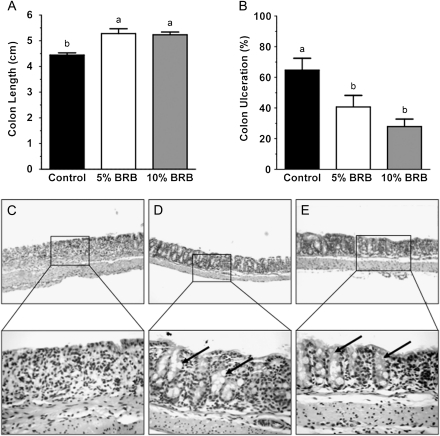Fig. 2.
The effects of BRB on DSS-induced colonic disease. Mice were administered 3% DSS in the drinking water and concomitantly fed either a control diet or a diet containing BRB powder (5 or 10%) until sacrifice at 7 days [n = 10 per group; means ± standard errors of the mean (SEMs)]. (A) Colon lengths were determined immediately upon sacrifice and (B) percentage of colonic ulceration was quantified in hematoxylin- and eosin (H&E)-stained sections as described in Materials and Methods. Representative H&E staining of colonic ulcerations from mice given DSS plus control diet (C), 5% BRB diet (D) and 10% BRB diet (E) (×100); greater magnification of each panel is indicated by the boxes (×400); arrows indicate intact crypts retained within damaged mucosa. Data are means ± SEMs, n = 10 mice per group. Significance was determined by one-way analysis of variance with Bonferroni's post-test. Groups not sharing a common superscript are significantly different (P < 0.05).

